
Enjoy Free Delivery Anywhere in the USA
The Mini Aussiedoodle is a designer dog breed that’s a perfect mix of the Miniature Australian Shepherd and the Miniature Poodle. This hybrid pup is known for being smart, loyal, and affectionate, with a loving and playful personality that makes it great for families and pet lovers. Because of its purebred and genetically brainy parents, people often call it the Einstein of dogs. The Mini Aussiedoodle is small but full of energy, sweet, cute, and adorable a true companion that loves being around people.
10 to 16 Inches
15 to 40 pounds
10 to 14 years
Did You Know? Aussiedoodles Come in 3 Adorable Sizes!
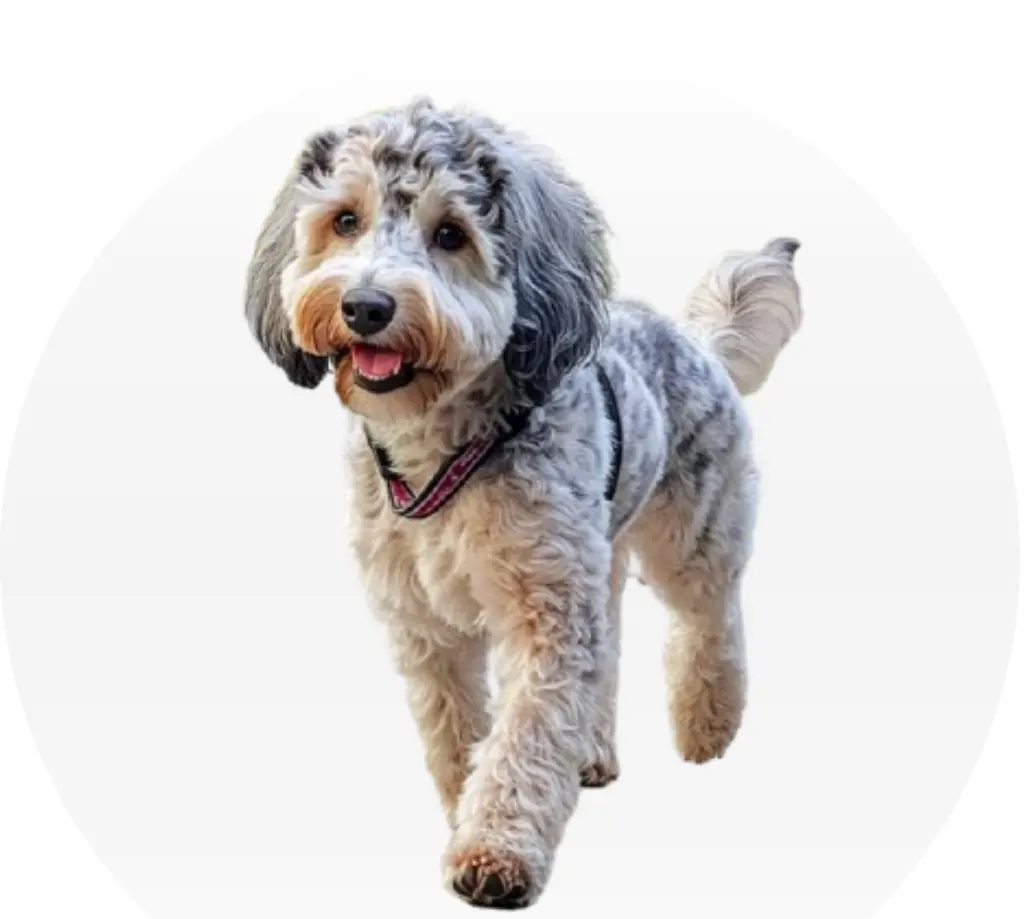
Smart, low-shedding, family-friendly companion dog
Aussiedoodles are healthy but need vet care, good food, and exercise.
They originated in the U.S. in the late 1990s.
Aussiedoodle
10 to 14 years
Children, Dogs, Families, seniors other Animals
Require regular grooming to keep their coat healthy and mat-free
High
Seasonal
Designer / Hybrid CrossBreed
Mini Aussiedoodles can have two-colored eyes or even multi-colored in one!
Poodle crossed with a Mini Australian Shepherd
Socialize Well, Have Fun, Basic Commands
Did You Know? The Australian Shepherds Isn’t Actually from Australia!
Mini Aussiedoodles may be small in size, but they’re full of love, personality, and energy! 💛
Most Mini Aussiedoodles grow to be around 12 to 18 inches tall and weigh between 15 to 35 pounds, depending on their parents.
They’re the perfect mix of cuddle-size and playtime energy — small enough to fit in your lap but big enough for outdoor adventures. 🌳🐕
Their soft, curly coats and bright, expressive eyes make them stand out wherever they go.
Whether you live in an apartment or a house, a Mini Aussiedoodle fits right in — bringing endless joy, loyalty, and charm to your home. 🏡💕
Exercise Needs
Active Explorer
Health Issues
Strong & Resilient
Grooming Needs
Fluffy Maintenance
Training Needs
Quick Learner
Shedding Level
Light Shedding
Friendliness
People Lover
Playfulness
Forever Fun
Energy Level
Always On-the-Go
Apartment Living
Compact Friendly
Cold Weather Tolerance
Mild Chiller
Warm Weather Tolerance
Summer Ready
First-Time Owner Suitability
Beginner Friendly
Good with Kids
Family Favorite
Good with Cats
Feline Friendly
Good with Other Dogs
Pack Buddy
First-Time Owner Suitability
Beginner Friendly
A delightful combination of the Australian Shepherd’s affectionate nature and the Poodle’s elegant charm, creating a truly lovable companion.

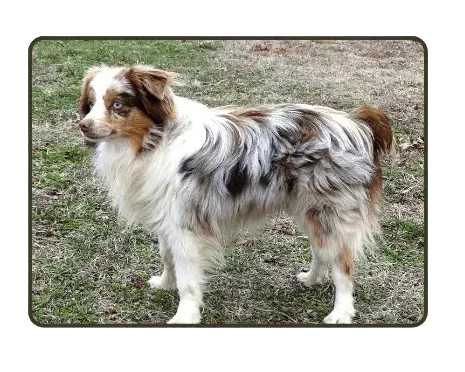
Aussiedoodles are usually healthy and live 10-15 years, but they can have problems like thyroid disease, joint issues, and bloat. Regular vet visits, good food, and exercise help them stay strong.
Some health problems in Aussiedoodles can be serious and need special care. Hip dysplasia and elbow dysplasia can make their joints hurt and make it hard for them to walk. Epilepsy can cause seizures, which need a vet’s help. Progressive Retinal Atrophy (PRA) and cataracts can make them lose their eyesight. Thyroid disease can change their weight and energy levels. Addison’s and Cushing’s diseases affect their hormones and need treatment for life.
Other health problems are not as bad but can still be uncomfortable. Allergies can make their skin itchy. Patellar luxation happens when their kneecap moves out of place, making them limp. Sebaceous adenitis is a skin problem that causes hair loss and dry fur. Some eye problems may cause irritation but can be treated with eye drops or vet care.
A journey of love and intelligence through generations of exceptional breeds.
The Mini Aussiedoodle is a hybrid breed that comes from the Miniature Poodle and Miniature Australian Shepherd. It was first bred in North America as part of a growing trend of doodle breeds like Labradoodles and Goldendoodles. People wanted dogs that were intelligent, hypoallergenic, and had fewer health problems than purebreds. This mix quickly became popular because it combined the loyalty and herding instincts of the Australian Shepherd with the intelligence and low-shedding coat of the Poodle.
The Miniature Poodle has been around for over 500 years, originally bred as a smaller version of the Standard Poodle. The Miniature Australian Shepherd was developed in the 1960s from the smallest Australian Shepherds. By the 1990s, breeders began mixing these two breeds to create a smart, friendly, and energetic companion. The Mini Aussiedoodle quickly became one of the most popular designer breeds, loved for its charming personality and adaptability.
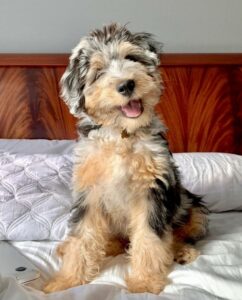
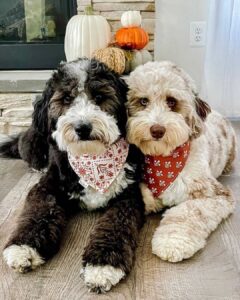

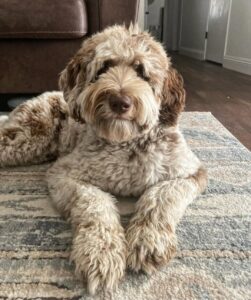

Mini Aussiedoodles are small, adorable dogs that usually stand 12 to 18 inches tall and weigh around 15 to 35 pounds when fully grown. They’re known for their floppy ears, sweet eyes, and soft, wavy coats that can come in many colors like black, blue, red, white, or brown.
Because they’re a mix of an Australian Shepherd and a Poodle, every Mini Aussiedoodle looks a little different — that’s part of their charm!
You can find them in Toy, Mini, or Standard sizes, but the Mini version is the most popular for families. They have strong little bodies, cute noses, puffy tails, and a hypoallergenic coat that’s super soft and silky to touch.






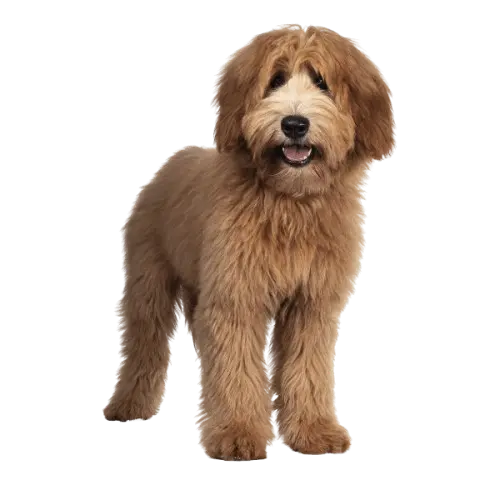
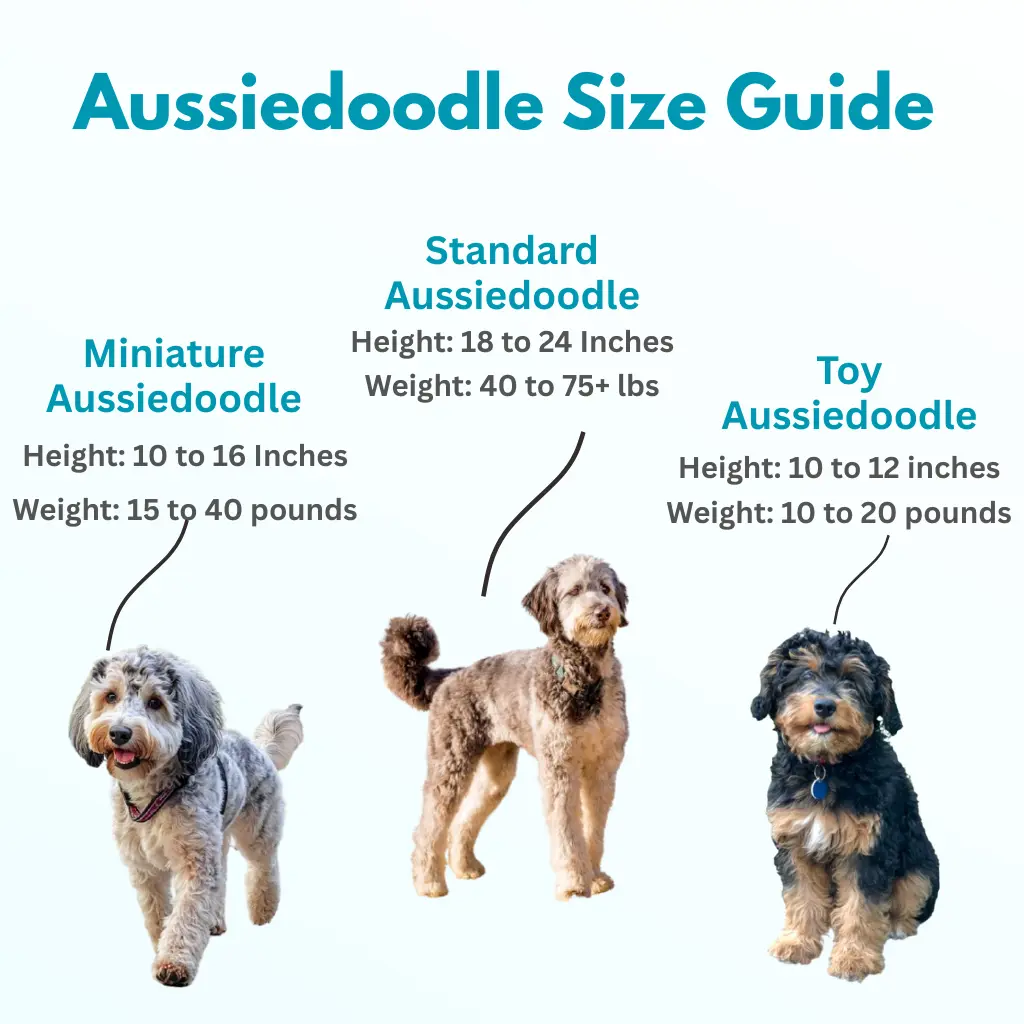
In the 1980s, Labradoodles became super popular because they were smart, loyal, and good for people with allergies. This led to other mixes like Aussiedoodles and, later, Mini Aussiedoodles!
Mini Aussiedoodles are smart like Poodles and playful like Australian Shepherds. They also have lots of energy and love being around other animals and people.
No two Mini Aussiedoodles are exactly the same. Some puppies act more like Poodles, some like Australian Shepherds, and others are a mix. It’s always a surprise, but they’re all lovable!
Mini Aussiedoodles are adorable, intelligent companions, but choosing between generations like F1, F1b, and F2 can be tricky. Here’s a quick breakdown to help
A 50/50 mix of Mini Australian Shepherd and Poodle. They are known for their balanced traits and moderate shedding.
75% Poodle and 25% Mini Australian Shepherd. Best for allergy sufferers with low-shedding coats.
F1 x F1 pairing. Coat type and shedding levels can vary.
When it comes to Miniature Aussiedoodles, their coat is as unique as their mix of Australian Shepherds and Poodles. The fur can vary — some have curlier coats, others wavy fur, or even a straight coat. Each type needs a slightly different grooming routine.
Because they have low shedding or even non-shedding coats, thanks to their Poodle DNA, they still require care to prevent tangles, matting, and itchiness.
I’ve found that brushing 2–3 times weekly keeps the soft, silky coat looking its best.
Whether your dog has double coats or tight curls, consistent care makes a huge difference.
Use a brush that reaches the skin. Follow with bathing using a dog-friendly shampoo. Always dry ears completely after the tub, especially if your pup loves swimming or outdoor adventuring.
As a pet owner, maintaining your dog’s coat appearance is a big part of your responsibilities.
Professional grooming every 6–8 weeks keeps the coat shape neat and prevents mats from forming. Frequent haircuts or periodic grooming help manage a longer coat length.
I like to do nail trimming whenever I hear clicking nails on hard surfaces — a good rule of thumb that it’s trim time.
Keep nails trimmed, neat nails, and do proper ear cleaning through a weekly grooming ritual. This helps avoid infections, especially for floppy eared and water-loving dogs with hanging ears.
Regular ear inspection, dental care, and veterinary dental cleanings keep teeth and gums
healthy. They also reduce the risk of dental disease, dandruff, and hotspots.
Regular grooming, caring, and take care of your companion dog’s health not only keep them tidy, but also give them that stunning look that shows your trademark appearance as a loving and dedicated owner.
When I first brought my Mini Aussiedoodle puppy home, I saw how bright and eager to please they are. Their personality starts to shine with early socializing and training. Introducing them to new people, animals, and environments builds confidence and comfort in new situations. My vet suggested age-appropriate socialization ideas, like visits to dog parks, puppy classes, and playdates, which helped prevent separation anxiety and barking, creating a friendly and well-rounded companion.
Miniature Aussiedoodles respond best to positive training methods—using treats, toys, and praise to motivate them. Their cleverness from the Australian Shepherd and Poodle makes them highly trainable and fast learners. They easily pick up simple commands and even challenging tasks. Avoid negative training or anything that feels like abuse, as it only leads to problematic behaviour.
A rewards-based approach helps build loyalty and strong bonds between you and your dog. Whether through obedience school or home sessions, take training responsibilities seriously during those impressionable puppy days. The mental stimulation, exercise, and obedience skills developed now create a happy, healthy, and loving connection with your pooch, full of affection, joy, and lifelong learning.
When I talked to my vet about my Mini Aussiedoodle, she helped me create a custom diet for my dog based on her lifestyle, size, and life stage. Following AAFCO guidelines, we made sure the meals were formulated and complete. A good diet is more than just food; it supports your dog’s health, energy, and exercise routine. Puppies with faster metabolisms eat 3-4 times a day, full-grown and adult Aussiedoodles eat 2 meals a day, one in the morning and one in the evening. This helps reduce the risk of bloat, which some Standard Aussiedoodles are prone to. If your pup eats fast, try a slow-feeder bowl, snuffle mat, or puzzle toy to slow them down.
I’ve also learned that keeping treats to 10% of their diet keeps them from losing appetite for regular food that provides nutrients. Healthy dogs Mini Aussiedoodles live 10-15 years but can face hip issues, eye issues, or joint issues later in life, so regular vet visits and a quality kibble with glucosamine is a good choice. I prefer high-quality protein, healthy fats, and nutrient-rich veggies like fruits, turmeric, thyme, and parsley for joint, immune, and digestive support. A protein-rich, nutrient-dense meal plan of about 20-30 calories per pound of body weight keeps them active, not heavy. Whether you feed fresh food, gently cooked meals, or a mix, always choose real, recognizable ingredients that make every bowl wholesome and tasty for your pup.
When you bring a Mini Aussiedoodle into your home, think of their world as an all-day playground where they feel safe, happy, and loved. They love to have easy access to the outdoors – whether that’s a fenced yard, a local park, or regular outdoor trips. They need space to run, play, and explore, and daily opportunities to use their brains and bodies so they don’t get restless or bored.
Inside your home, it’s just as important to create a calm space for your dog to chill out after all that fun. Make sure young children meet the dog when the dog is calm, as this breed has a herding instinct and will try to gently “round up” the kids unless they’re taught early how to play safely together. Your Mini Aussiedoodle will do best with a family that invests in both his physical exercise and mental enrichment – and the moment you see that tail wag during a backyard sprint or fetch session, you’ll know you’re giving them the active, loving environment they thrive in.
Mini Aussiedoodles — these little bundles of energy — need regular exercise to stay happy, healthy, and well-behaved. Puppies, especially, should have short play sessions — about 5 minutes per month of age, twice a day. For example, a six-month-old pup can handle around 30 minutes of gentle activity two times a day. But be careful not to overdo it! Avoid heavy activities like running or long hikes until they’re fully grown, which is around 12 months old.
Once your pup reaches adulthood, Mini Aussiedoodles need about 60 to 90 minutes of daily exercise. They love walks, fetch, agility games, and even puzzle toys that challenge their clever minds and keep them busy. These fun activities not only burn off energy but also help prevent boredom and unwanted behaviors. With their mix of Australian Shepherd and Poodle smarts, keeping both their bodies and brains active is key to a happy life.
When it comes to older Mini Aussiedoodles, they still need to move, but at a gentler pace. A slow walk or some light play helps them stay fit and maintain a healthy weight. If your senior dog shows signs of joint pain or arthritis, adjust their exercise routine and check with your vet for safe options. The bottom line? Regular exercise keeps your Mini Aussiedoodle strong, calm, and joyful — and that’s exactly what every pet parent wants for their four-legged best friend.
Choosing a dog when you have allergies can be tricky — you want cuddles, not sneezes! 😅 The Aussiedoodle, a mix of Australian Shepherd and Poodle, might be your best match. Thanks to their Poodle side, they shed very little, making them great for people with mild allergies. While no dog is 100% hypoallergenic, Aussiedoodles come pretty close — smart, loving, and gentle on your allergies! 🐾💛
F1 vs. F1B Aussiedoodles: Which Is Better for Allergies?
If allergies are a major concern, you might want to understand the difference between F1 and F1B Aussiedoodles:
Many breeders recommend F1B Aussiedoodles for people with moderate to severe allergies.
Grooming an Aussiedoodle is fun and practical, with styles like the Teddy Bear or All Over Haircut enhancing their charm and comfort. Their unique fur combines Poodle curls and Australian Shepherd softness, offering easy maintenance and a healthy, stylish look. A great haircut keeps them happy and strengthens family bonds!
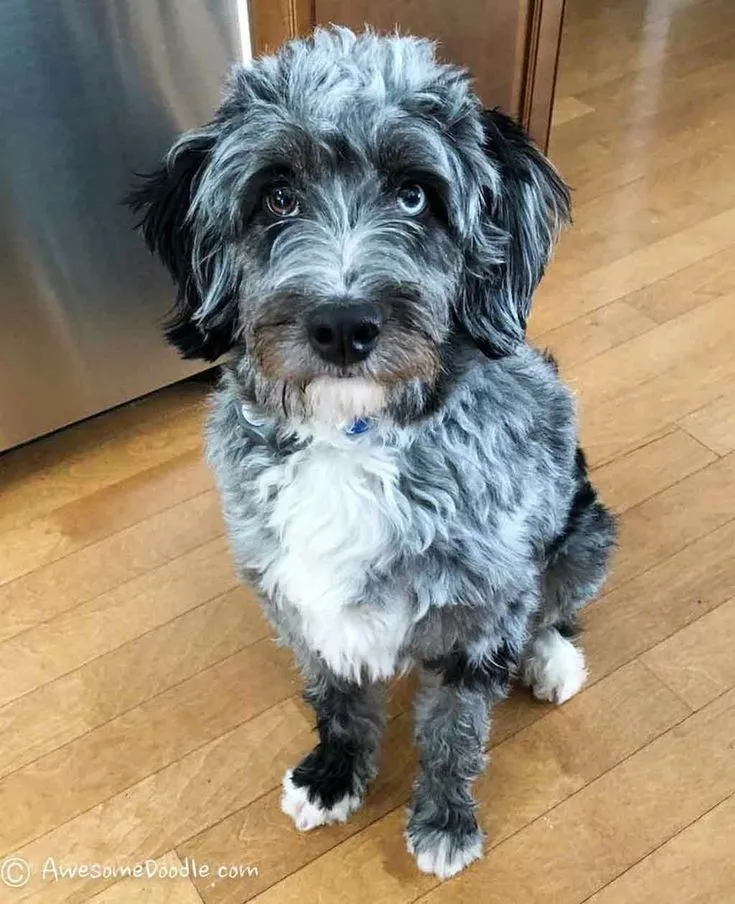
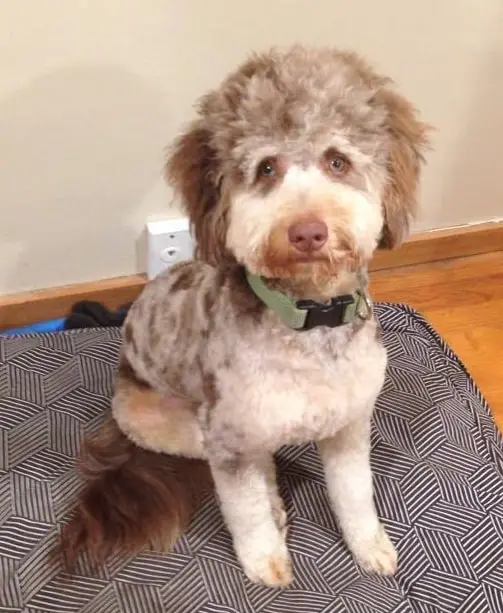
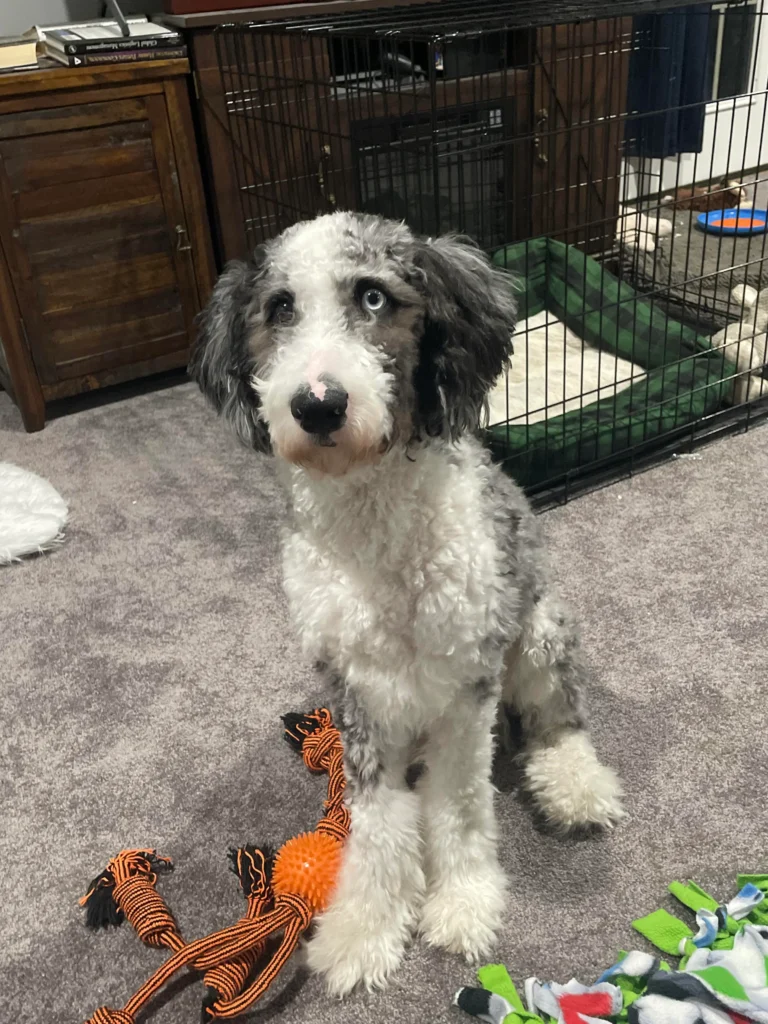
The Mini Aussiedoodle has a unique temperament, which is gifted from her parents, an Australian Shepherd, and a Miniature Poodle. These dogs are incredibly friendly, loving, and attached to our families, making them the perfect family dog. Their intelligent, loyal, and playful nature sees daily walks and play sessions, keeping them healthy and busy.
Mini Aussiedoodles can be friends with other pets if you introduce them properly. They may try to herd other animals because of their Australian Shepherd lineage, and Miniature Poodles sometimes like to chase things. But you can prevent it with proper training.
Aussiedoodles are not good guard dogs. They love people very much and do not get angry with strangers. However, they can be good watchdogs because they alert you when someone is around.
These dogs love to learn new things and enjoy sports such as swimming or hiking. They are very smart and easy to train. However, they don’t like to be left alone for long, so having someone to play with and keep them busy is important.
Overall, these dogs are smart, curious, and adventurous. They are sporty and love to cuddle, making them a special breed




Aussiedoodles are a wonderful breed famous for their friendly, intelligent, and playful personalities. They are a great choice for families and individuals who enjoy active lifestyles.
Aussies are suitable for many different homes because they don’t cause allergies and are of medium size. They require regular exercise, mental stimulation, and grooming to maintain their health and happiness.
If you’re looking for a loyal, loving, and active partner, a Mini Aussiedoodle might be the perfect fit. Their gentle nature, intelligence, and adaptability make them a delightful addition to any home.
Need Help?
A Mini Aussiedoodle is a small dog. It usually weighs between 15 and 35 pounds and is about 12 to 17 inches tall. It takes about a year for them to grow to their full size. Female Mini Aussiedoodles are usually smaller than males.
Aussiedoodles don't smell much, especially if you keep them clean. Regular brushing and bathing can help keep them smelling good.
Aussiedoodles don't bark too much. They might bark when they're excited or want to alert you to something.
Many Aussiedoodles like to swim because they are part of a Poodle. But not all Aussiedoodles like water. You should slowly introduce your Aussiedoodle to water to see if they like it.